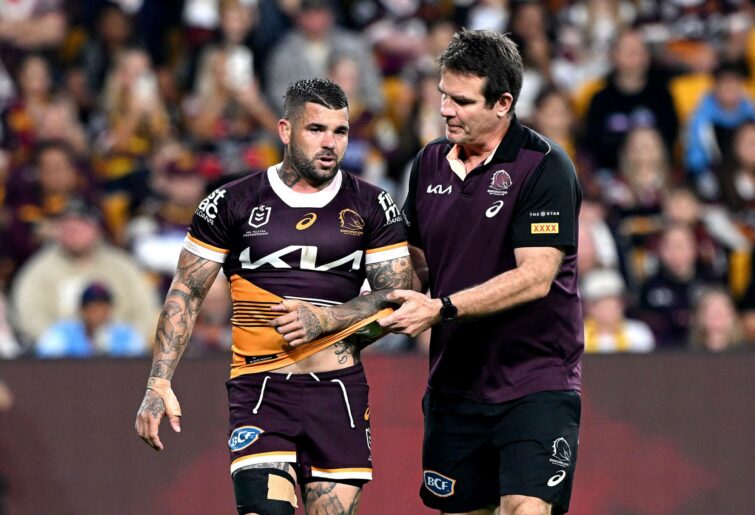It’s time to change up the NRL interchange and finally bring it up to speed with other codes

The NRL is faster than it has ever been, the six-again rule adds to fatigue, head injury assessments (HIAs) are now commonplace and quite often a team will go down to a three-man bench, and need to activate the 18th man. The game has sped up, but it’s left the interchange system dragging behind.
Cast your mind back 15-20 years ago and shoulder charges were almost expected (along with punching and other activities) but the game has dramatically improved this side of things, and comparing a game from 2004 to 2024 is like going back in time to a different century.
Rugby league has always been progressive to make the spectacle better, think back to the move from the five-metre defence line to the ten-metre line, dabbling with unlimited interchange, the introduction of a video ref and obviously continued tweaks, like the six-again, and even the 40/20 rule.
All these changes have happened and yet one thing has stood still: the size of a squad. Where it might have been in the 80s and 90s that the bench was often made up of players who backed up from reserve grade with the hope of getting on, to then a proper interchange of four experienced players, it hasn’t changed since, except an 18th player is added, only to be activated in certain situations.
Adam Reynolds. (Photo by Bradley Kanaris/Getty Images)
It seems crazy when you compare it to rugby union and football, where anywhere from 40 per cent to 53 per cent of the playing team is covered with bench players. For instance, rugby has eight replacements and yet the NRL only has 30 per cent cover – or four injuries/HIAs maximum.
Now is the time to change this; the interchange needs to move to six. There needs to be room to carry an outside back, and a backup half, without being at the expense of carrying two props, a back rower and possibly backup hooker.
It would remove the need to carry an 18th man, and ensure the spectacle has the integrity through the game, as an injured outside back has a like-for-like swap and a half has a backup in the event they’re removed (most likely due to an HIA).
It wouldn’t lead to more interchanges being available, teams would likely have players who don’t get on during a game, not uncommon in other codes, but allows for coaches to use the substitutions as they like. Imagine a coach gambling on a five forward bench, with one half/outside back bench player – the whole dynamic could change.
Obviously, that goes against the intent of the six player bench, but coaches will look for an edge and innovation.
It would also be good for young halves, as they could be blooded at first grade at the end of a game or for short periods – no one wants to give the keys to the team to a young half, but allowing them to get game time would only progress their development.
Nathan Cleary. (Photo by Brendon Thorne/Getty Images)
Teams would then become similar to even NFL teams, who carry at least one backup quarterback. There would be a starting half, but also the opportunity to carry a backup half, which is crucial given one injury can curtail a season or a big game.
Look at Penrith – Nathan Cleary is injured now, but what if he was close to being back, Brad Schneider could start the game and Cleary could play the last 20 minutes, closing the game out, but also after the ‘sting’ has gone out of the game.
Inevitably something will change in regards to the interchange composition, lets hope the NRL gets the balance right between what’s been the standard up till now, and what will improve the spectacle without losing what’s great about the game.
